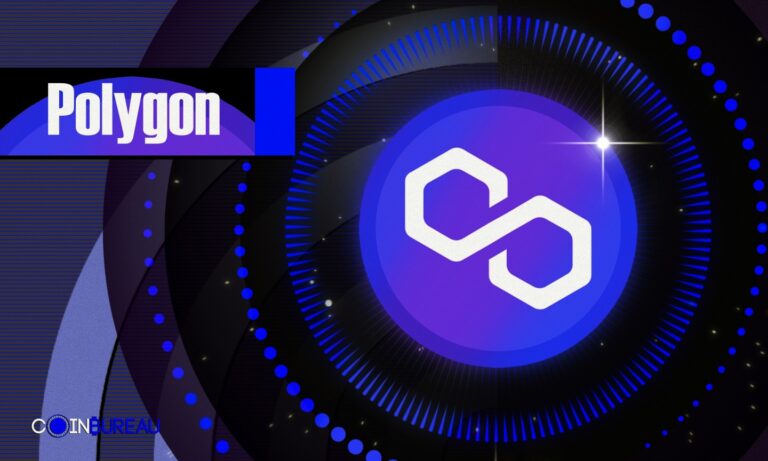Mining in cryptocurrency is the process of securing and verifying transactions (called blocks) along the blockchain. Cryptocurrency mining (also called crypto-mining); helps to maintain network security by ensuring that, only valid blocks are recorded on the digital ledger.
Participants in a mining process get rewarded for dedicating their resources and time to solving computational algorithms.
Cryptocurrency mining can be done in either Proof of Work (PoW) or Proof of Stake (PoS) consensus, depending on the coin.
In this article, we examine what Proof of Stake is, how it works and which coins currently use this method.
Page Contents 👉
What’s Proof-of-Stake?
Proof of Stake is a consensus algorithm whereby new blocks are secured by validators before being added to the blockchain. In proof of stake mining algorithm, a person (node) can participate in the mining process by “staking” a given amount of their coins to be allowed to validate a new transaction.
The PoS is a deterministic concept that simply states that an individual is only able to mine or validate new blocks equivalent to the number of coins they possess in their staking account.
It implies that the more coins you have, the higher your mining power, i.e., the more coin you have in your wallet, the more transactions you can validate to earn block rewards.
How does Proof-of-Stake work?

Image via Fotolia
In Proof of stake consensus algorithm, miners (called validators, delegates or forgers) are chosen or voted for randomly by holders of the native coin on the network.
When you hold a given amount of coins in your wallet for staking, your computer qualifies to be a node. For a node to be chosen as one of the stakers, they need to have deposited a certain amount of coins in a bound wallet.
The chosen validators then stake the required amount of coins using the special staking wallets. The node will forge or create new blocks proportional to the number of coins in their wallets. For instance, if you have 1% of all the coins, then you can “mine” 1% of the new blocks.
Different coins use a variety of PoS systems, but they all work the same by helping verify transactions and to secure the network. Validators get rewarded with block rewards as well as a share of the transaction fees collected per block.
What about Proof of Stake Pooling?
It is possible to pool funds to participate in staking and earn profits from coins that have very high staking amounts. There are two ways to do this. You can give your coins to another user who will stake and then share profits with you.
This of course should be with a reliable person known to you. The other method is to join a staking pool. Here you get to join some of the biggest holders.
Benefits of a PoS consensus system
- Proof of Stake consensus mechanism doesn’t require specialized and expensive hardware to run. You only need an internet connection and a functional computer setup.
- Anyone with enough coins to stake can validate transactions on the network.
- Investments in a PoS system do not depreciate with time like what happens to ASICs and other mining hardware. A validators’ initial stake can only be affected by price fluctuations and trading rates.
- Proof of Stake is more energy efficient and environmentally friendly than Proof of Work regarding power consumption.
- Reduced threat of 51% attack.
Although the PoS consensus algorithm indeed does sound great, there is one disadvantage and that is that decentralisation is not fully possible.
This is because staking can still be monopolized be a few of the nodes on the network. Those that have the most coins can effectively control most of the mining.
Most Profitable POS Coins
When you invest in a Proof-of-Stake coin you have the added benefit of not only of the possible appreciation in the value of the coin but also of the returns on possible staking.
But which are the best PoS coins to invest in currently. Below are a few you may want to consider.
NEO
NEO is a decentralized blockchain platform that seeks to develop a smart economy using cryptocurrency and blockchain technology. NEO’s proof of stake algorithm uses the delegated Byzantine Fault Tolerance (dBFT).
Participants on the NEO platform can stake their coins to earn a reward in the form of “GAS”. When staking with the NEO gas, all you need is to have the NEO coins in your NEON wallet.
You get an annual reward worth 5.5% on all the coins you stake. The best thing about NEO staking is that you do not have to be online all the time.
Lisk
Lisk (LSK) uses a form of staking called delegated Proof of Stake consensus algorithm. To participate in securing and verifying transactions on the Lisk platform requires you to have enough LSK and be one of the top 101 delegates.
A delegate is an account that has been voted for by other LSK holders to complete transaction blocks. Delegates are chosen through voting on a rolling basis. You get rewarded with LSK for generating new blocks and securing the blockchain.
Stratis
Stratis (STRAT) is a blockchain-based cryptocurrency platform built in the C# code. Its token coin STRAT is used when generating new transaction blocks using Proof of Stake consensus mechanism.
Staking is done using the Stratis Desktop Wallet. When you stake your STRAT coins, you earn an annual interest of 5.1%. This is in addition to the block rewards and transaction fees shared among stakers. Read more about it here.
PIVX
PIVX stands for Private Instant Verified Transaction. PIVX is a privacy-oriented blockchain based cryptocurrency. It forked off DASH in 2016 and fully implemented the proof of stake consensus algorithm.
The crypto doesn’t have a minimum or maximum staking amount, which means even those with the least amount of PIVX, can still participate and earn rewards.
Staking is enabled using the PIVX Desktop Wallet.
To run a master node and therefore earn more in rewards, you need to have 10,000 PIVX. From these, you get an annual approximation of 5% return on investment (ROI).
OkCash
OkCash was launched in 2014. It is a cryptocurrency suitable for micro-transactions and uses the proof of stake consensus mechanism to secure and verify transactions on its network.
OkCash provides the one of the best ROI on staking. To participate, a user transfers OK coins into a special staking wallet. The bonded coins will be used to verify transactions while they earn rewards in form of OkCash.
Staking on the OkCash network will earn you an annual return of 10% on the value of your stake. OkCash is a low-barrier coin because it doesn’t have any caps on the amount you can stake.
NAV Coin
NAV Coin is a cryptocurrency built on Bitcoin’s code. It is a Proof of Stake coin that has distinguished itself as a dual blockchain suitable for private transactions.
You can earn up to 5% returns on top of your stake. Staking with NAV, the native coin, is done on the NAV Coin Desktop wallet. As with OkCash, NAV Coin has no caps placed on you can stake.
Summary
Cryptocurrency mining is one way of getting crypto coins into circulation. Proof-of-stake is similar to POW in this respect. However, as decentralization and cheaper transactions become more important, the use of PoS could help by cutting on hardware costs and electricity needs.
That’s why we have Ethereum implementing its Casper protocol that will see it move from a Proof of Work system to a proof of stake mechanism. When it does, it will be one of the best due to its popularity and market cap.
Other Cryptocurrencies that you can stake to earn rewards are NXT, PeerCoin, Stellar and Bitshares.
Featured Image via Fotolia














